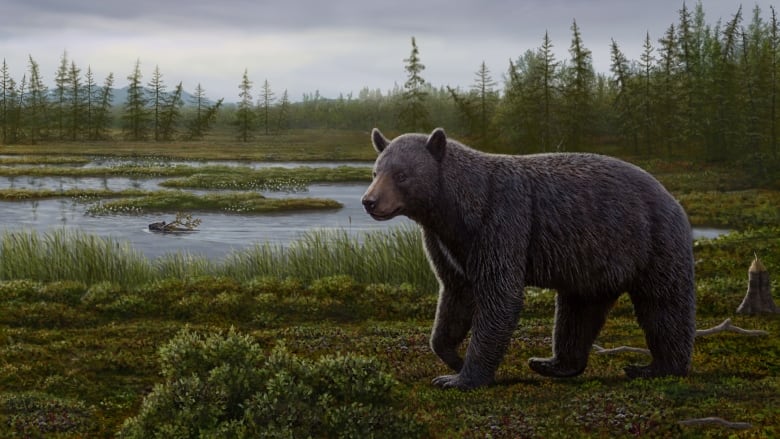Ellesmere Island fossil site yields bear teeth with cavities and remains of berry plants

Two bears living in a boreal forest in Canada’s High Arctic millions of years ago munched on too many sweets and didn’t brush their teeth, fossil evidence suggests.
As you might imagine, those bears ended up with cavities — something that paleontologists were very excited to see.
“These individuals actually suffered from a condition that well, humans also experience,” said Natalia Rybczynski, a research scientist at the Canadian Museum of Nature in Ottawa who helped excavate and study the fossils.
“I’m fascinated … because these are giving you insight into what these animals were actually doing.”
That evidence — along with remains of raspberry, blueberry, lingonberry and crowberry plants at the fossil site — suggests that ancient bears had a taste for sugary foods, probably berries, even then.
And, as with modern bears, that may have helped them fatten up to hibernate through the polar winter with its 24-hour darkness, Rybczynski and colleagues suggest in a new paper published today in the journal Scientific Reports.
The bear fossils were found at a site on Ellesmere Island, Nunavut.
While that area today is a frozen, barren, polar desert, 3.5 million years ago during the Pliocene (about the time when the ancient human relative Lucy roamed in Africa), it was about 20 degrees warmer — though it still dipped to one or two dozen degrees below zero in winter.
At that time, one of the first boreal forests grew there, providing a home to animals like beavers, small deer, three-toed horses — and, it appears, bears. The “Beaver Pond site” is one of very few fossil sites in the Arctic, and one of the only sites with mammal fossils, Rybczynski told CBC News: “So it’s a really important window into the past.”

While you have to chisel fossils out of the rock at fossil sites further south, at the Beaver Pond site you use a trowel to dig out felt-like peat full of well-preserved wood, leaves and pine cones.
“You have to pick up chunks of peat, and you sort of like peel it apart, and sometimes there’s a bone in there,” Rybczynski said. The bones are usually fragments broken up by freezing and thawing, chocolate brown in colour or iridescent blue due to the formation of a mineral called vivianite.
The first pieces of a bear’s skull were found by now-retired Museum of Nature paleontologist Dick Harington in the 1990s.
Other pieces of the skull, a jaw, and pieces of skeleton were excavated over 14 years. They were found to belong to two bears, one a young adult bear likely between five and seven years old and another who was older. Both had cavities in their teeth.
Cavities are also found in up to 44 per cent of modern black bears, which fatten up on berries before hibernation, but are rare in other animals, Rybczynski said.

Missing link
One reason the discovery is exciting is that the fossils are a missing link between primitive and modern bears, said Xiaoming Wang, lead author of the study. Wang, head of vertebrate paleontology at the Natural History Museum, says it suggests that bears likely began eating a high-sugar diet to fatten up and then hibernate very early in their evolutionary history.
“I can’t really imagine that these animals could really still sustain an active lifestyle through the winters,” he added.

The bear grew to be about 100 kilograms, making it slightly smaller than modern black bears that it looked quite similar to. However, Wang says it wasn’t a direct ancestor of modern black bears, which are known to have crossed into North America from Asia much later, during the last ice age.
The researchers can’t be sure whether the fossil bears they found were male or female, but one of the fossils includes canine teeth, which are typically much larger in males than females. Wang said their size leads him to believe the animal was male, but he can’t tell without having other specimens of the same species to compare to.
This bear isn’t a new species — a tooth from the bear of the same species was found in Idaho in 1970 and given the scientific name Ursus abstrusus. But scientists couldn’t get much information from a single tooth.
The fossils excavated from Ellesmere Island provide a lot more information and a “rare glimpse” into life in the High Arctic at that time, Wang said.